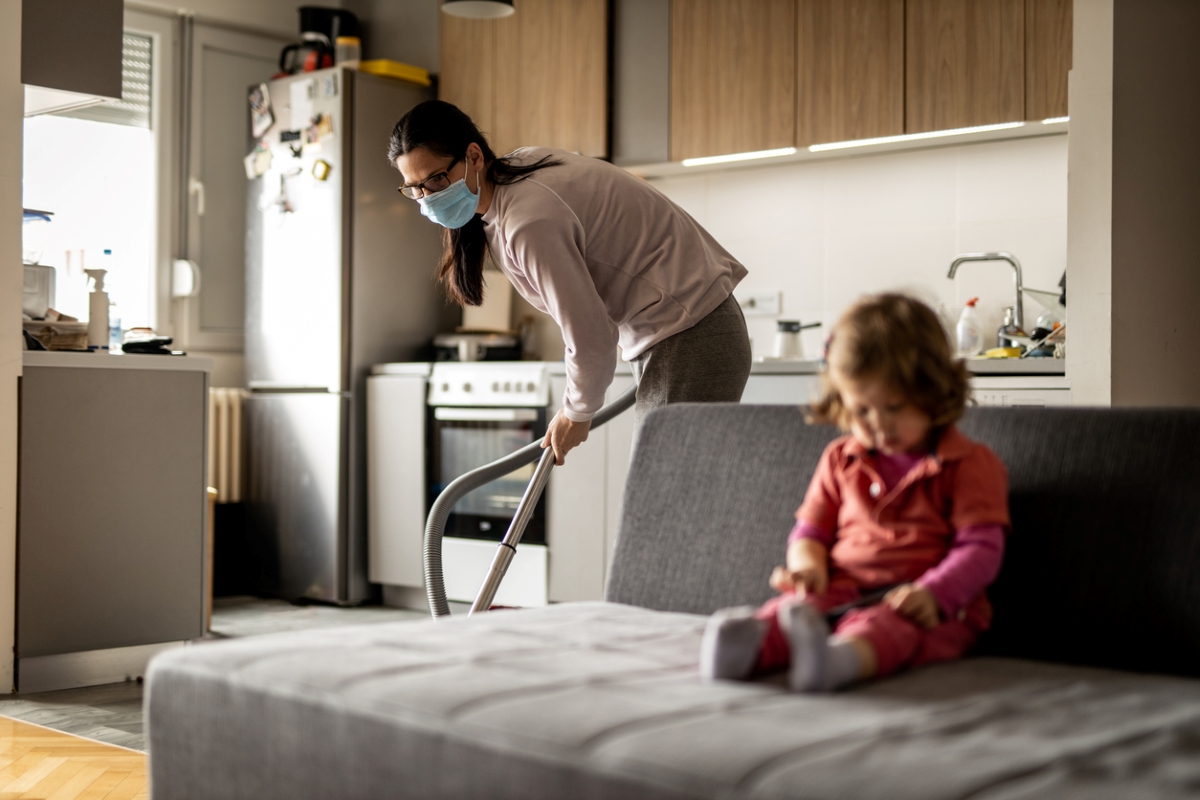

We may earn revenue from the products available on this page and participate in affiliate programs. Learn More ›
When you or someone in your household falls ill, the first priority is getting back to good health. Once symptoms subside, the next task at hand is to do a thorough job cleaning the house to prevent reinfection. Even if the sick person successfully isolates in one area, germs, viruses, or bacteria may still be living on items and surfaces they have touched.
In fact, viruses like the flu can live on surfaces for up to 48 hours. Common bacteria-prone surfaces can include tables, countertops, faucets, and door knobs. Disinfecting these and other oft-overlooked areas of the house can stop sickness from spreading, and restore a healthy home.
1. The Bathroom
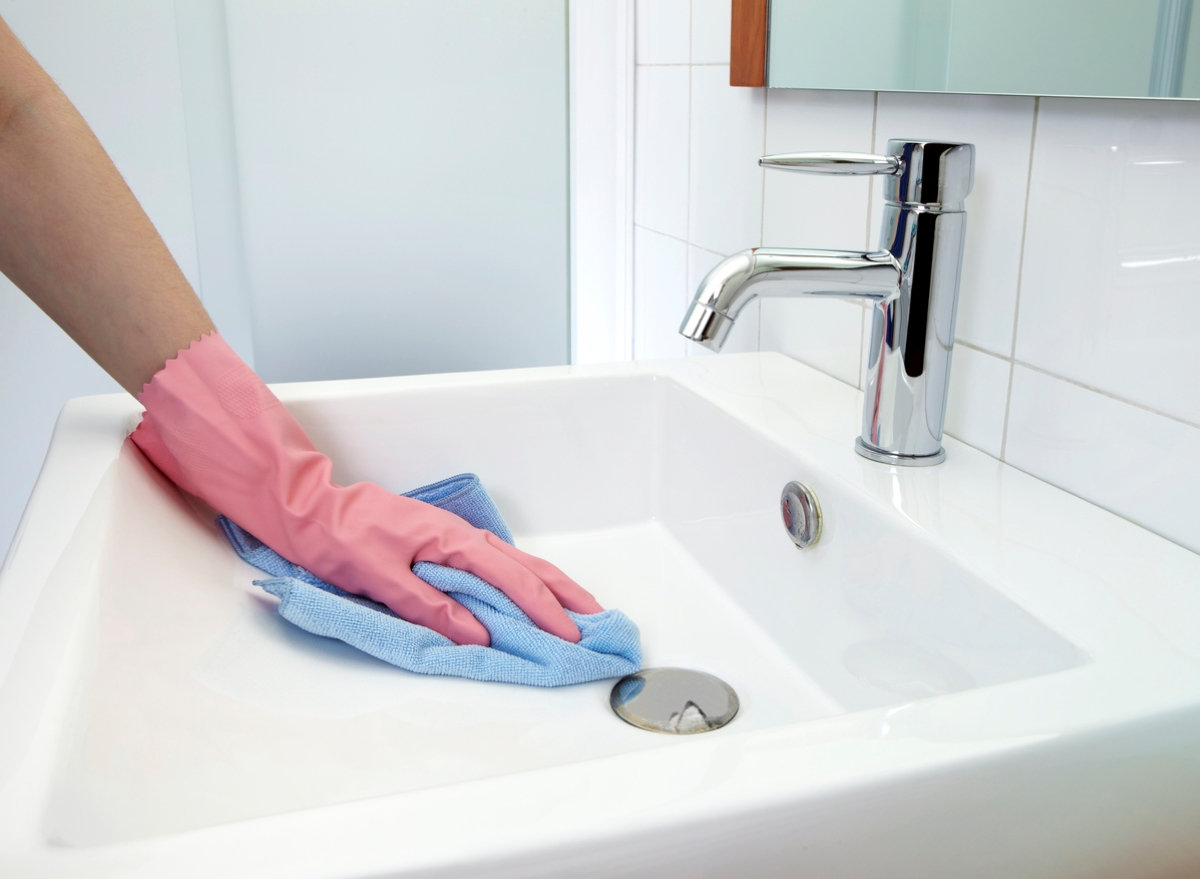
The bathroom is often ground zero when a germ wave rolls through your home. Once the storm has passed through, be sure to deep clean the bathroom, thoroughly scrubbing and disinfecting the toilet, all faucet handles, and other hard surfaces. (While you’re at it, be sure to replace all linens with clean ones, or put out disposable napkins for drying hands—this is not the time for communal hand towels.) Failing to clean the bathroom thoroughly could result in lingering pathogens, increasing the risk of infecting others.
RELATED: How to Get Your Bathroom Guest-Ready in 20 Minutes or Less
2. The Kitchen
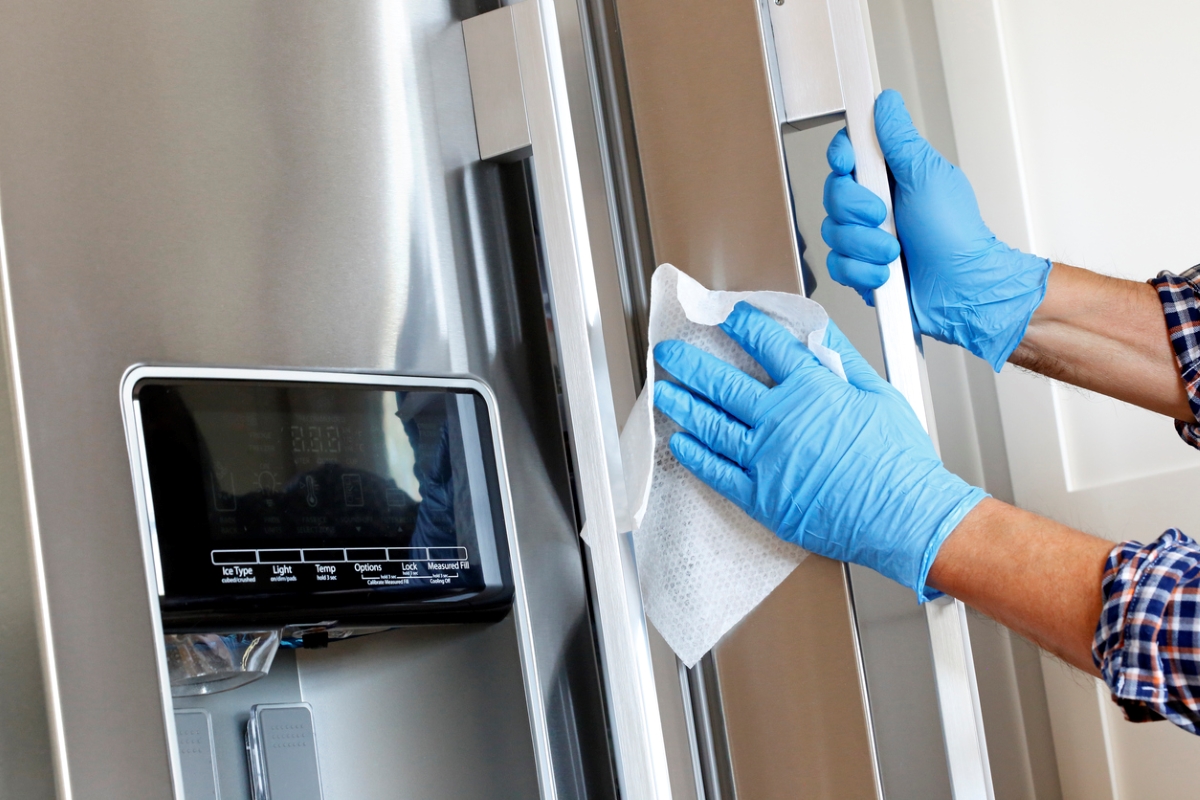
The kitchen can be hit hard during a bout of illness, which leaves in its wake germ-laden cups, dishes, and utensils. One study found that using a disinfectant daily had a 77 percent effectiveness for preventing a second attack of the Covid-19 virus in households. To stop viruses and bacteria from resurfacing in your kitchen, wash all dishes in very hot water or in the hottest setting on your dishwasher, and use the heated dry cycle. Wipe down refrigerator handles, countertops, knobs, and all electronic keypads on appliances, and sanitize the sinks with disinfectant.
RELATED: Would Your Kitchen Pass a Restaurant Health Inspection?
3. Door Knobs
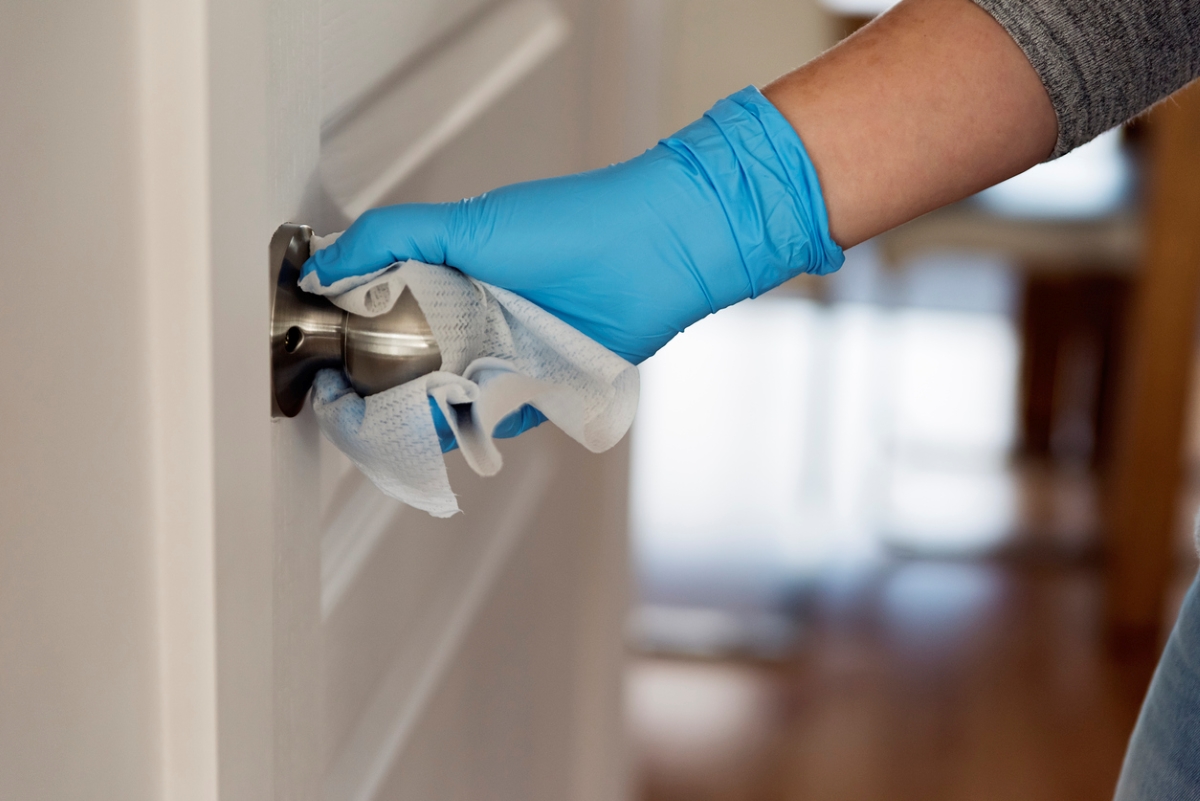
Frequent washing of hands makes all the difference in curbing the spread of germs, but we all know that’s easier said than done. To be on the safe side, grab some disinfecting wipes and swab every door knob and handle in the house, indoors and out. One study found that use of these handy wipes significantly reduced the amount of bacteria on most surfaces in dental offices.
RELATED: 10 Times You Should Never Use a Clorox Wipe
4. Towels
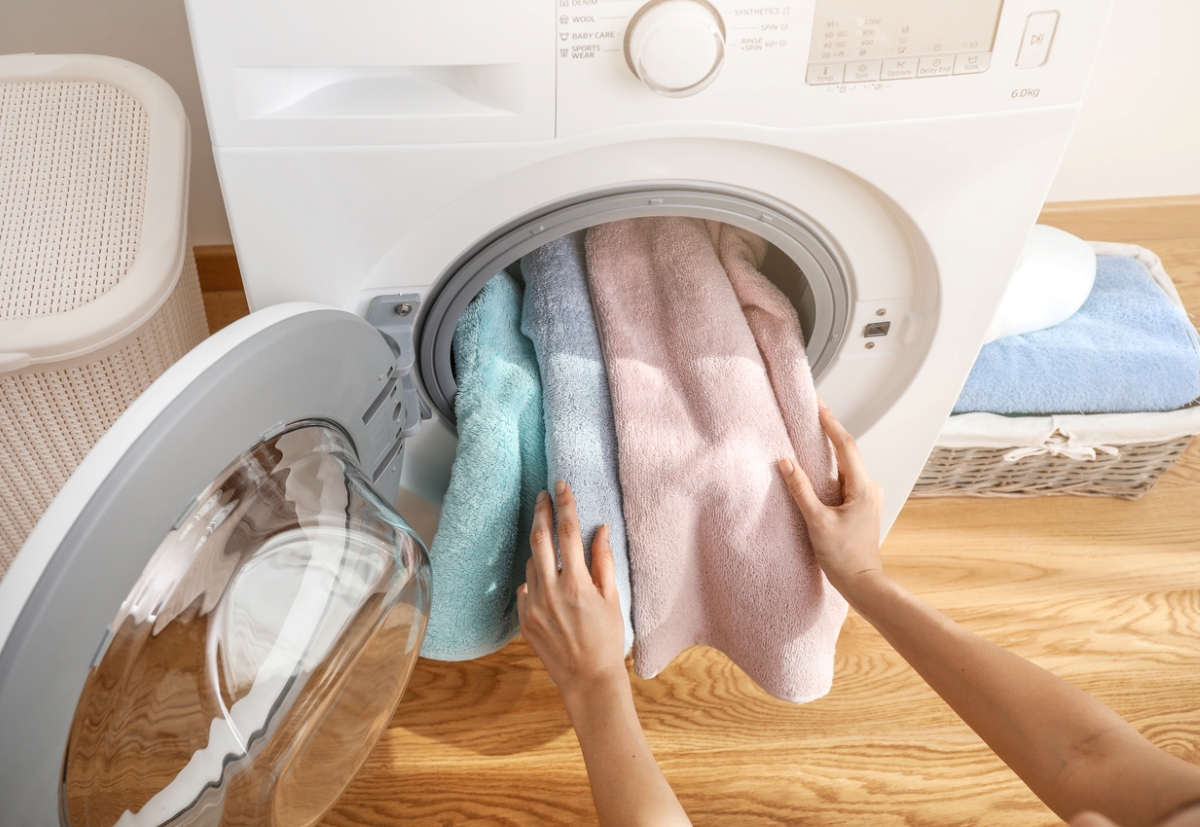
Anything your body touches while you are ill, including your towels, should be sanitized by washing in hot water. To really bust up the germs, add in a laundry sanitizer or bleach. Be sure to read your garment’s care label first to ensure it’s safe to wash with bleach.
5. Bedding

When we’re sick we tend to spend a lot of time in bed, which is why sheets, blankets, and comforters should be disinfected as soon as you’re up and about again. Launder them in hot water (a temperature of at least 160 degrees Fahrenheit for at least 25 minutes is typically recommended). If your mattress has been soiled, give it a good cleaning. Start by vacuuming, then spot clean (if necessary) and spray on disinfectant. Let it air out for the day before you put the linens back on.
RELATED: 11 Ultra Powerful Products That Cut Your Cleaning Time in Half
6. Clothing
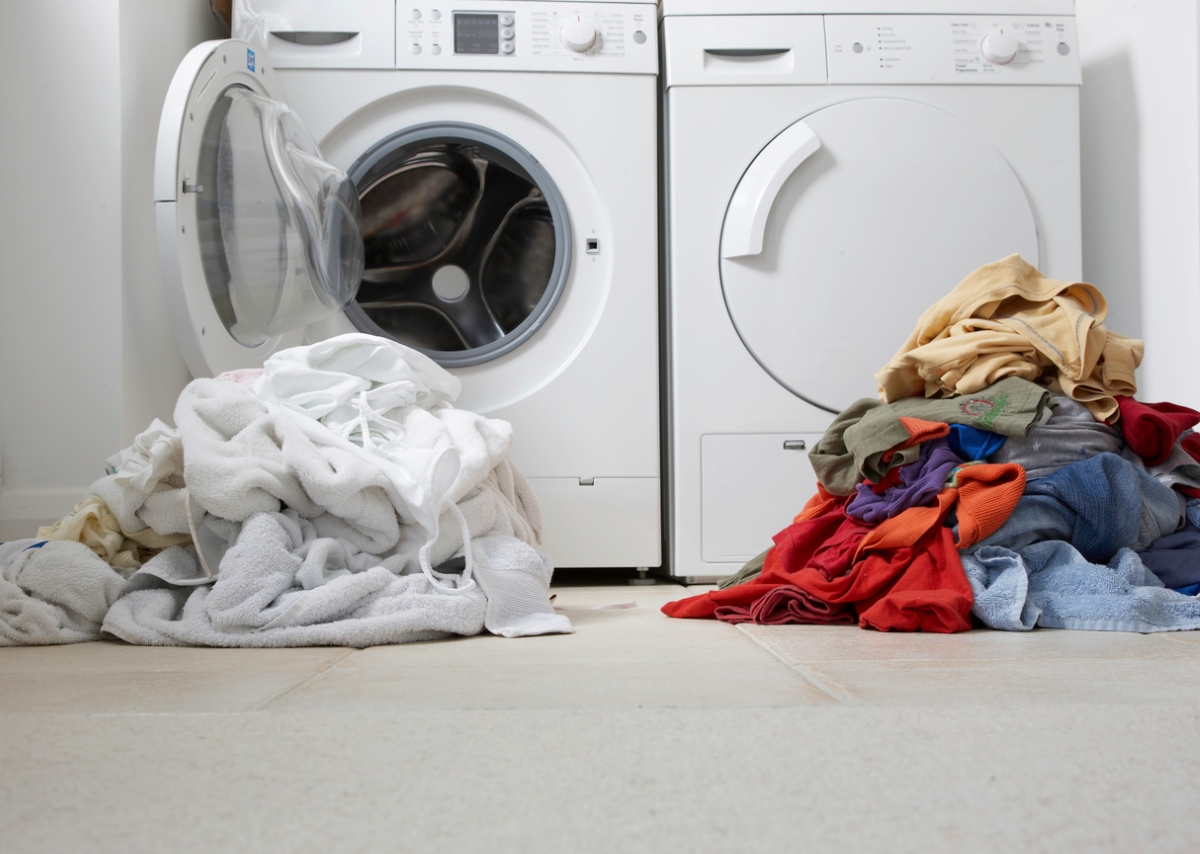
Any clothing worn while you’re sick needs to be sanitized. Wash everything in hot water in a separate load. Use the high heat or sanitize setting on your dryer to finish them.
7. Hard Surfaces
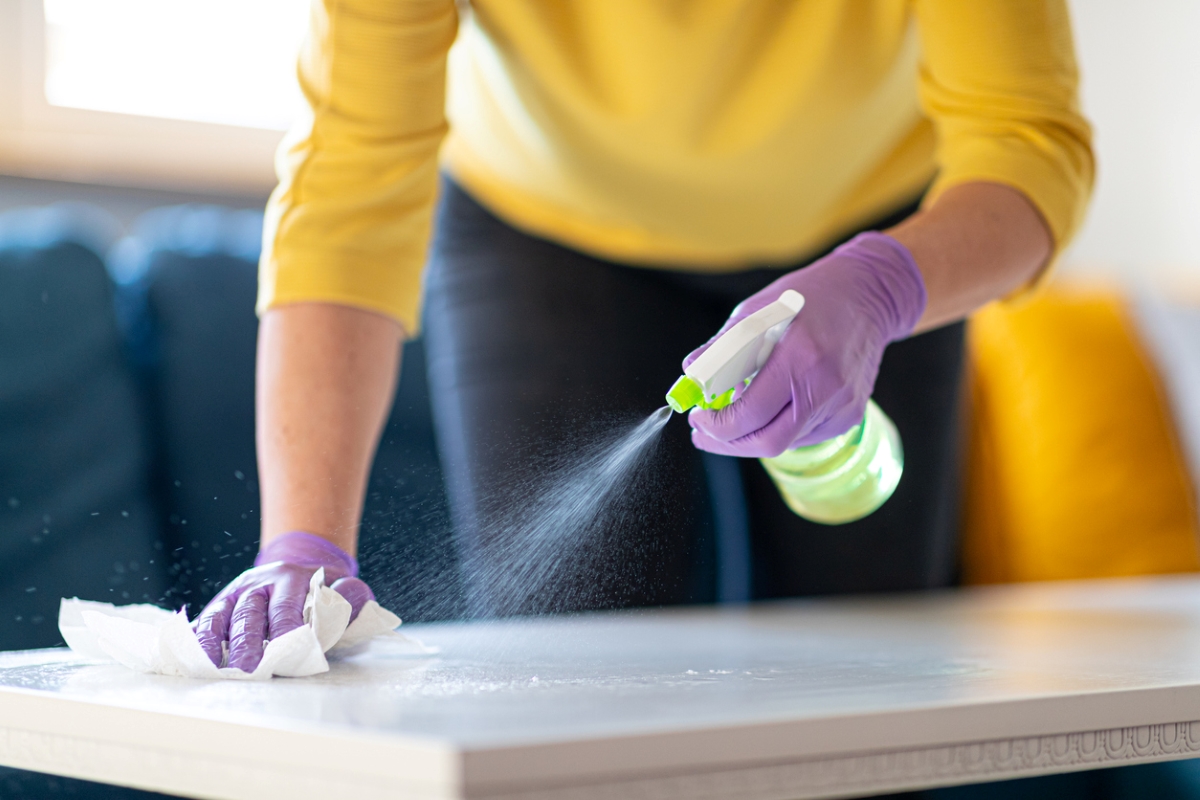
High-touch hard surfaces throughout the house need to be cleaned both during and after an illness. This includes all kitchen counters and the dining table and chairs. Don’t forget about light switches, stair railings, cabinet knobs and handles, and anything else you touch on a regular basis. They all need to be wiped down with disinfectant.
RELATED: 16 Things to Clean in Your Home After You’ve Been Sick
8. Remote Controls
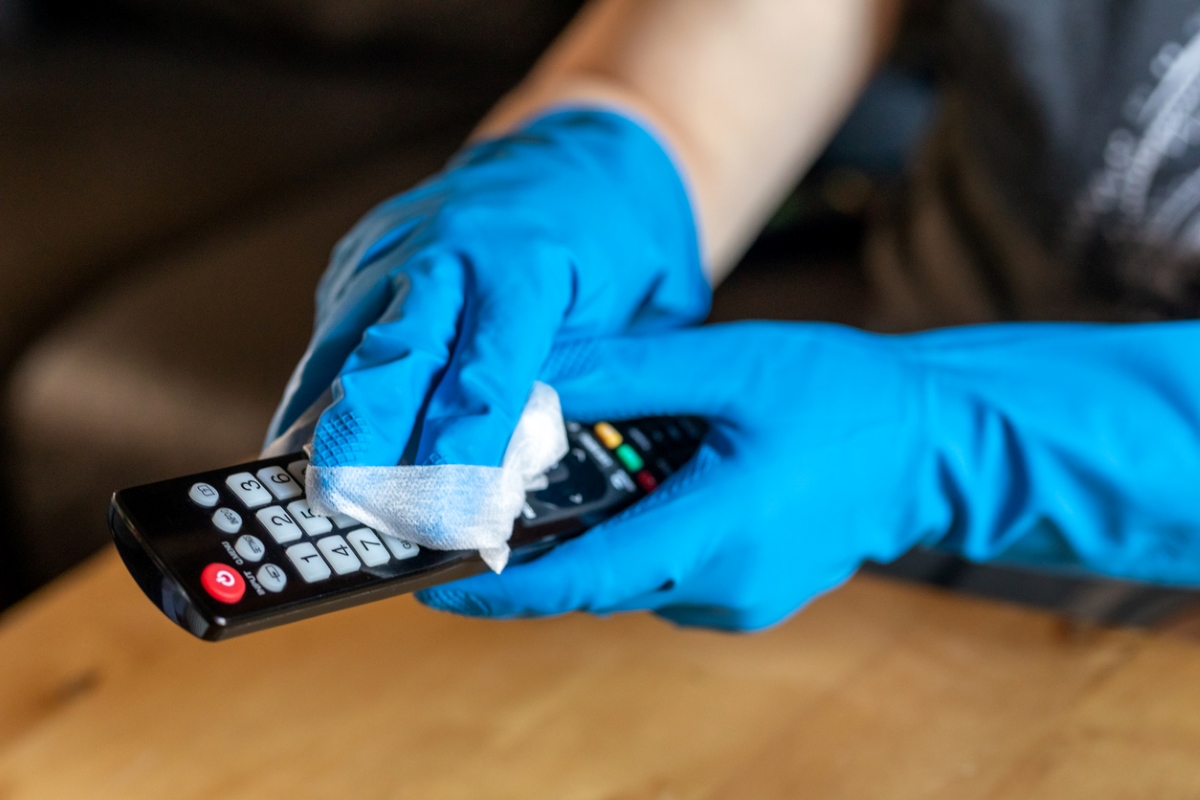
When you’re sick, sometimes all you can manage to do is binge Netflix. As a result, remote becomes a germ magnet. A study in India found at least 20 times more germs on remotes than on toilet seats. During and after an illness, wipe down all remotes with disinfectant wipes to prevent bacteria and other germs from resurfacing.
RELATED: 18 Spots in Your Home You Probably Never Clean—But Definitely Should
9. Phones and Other Electronics
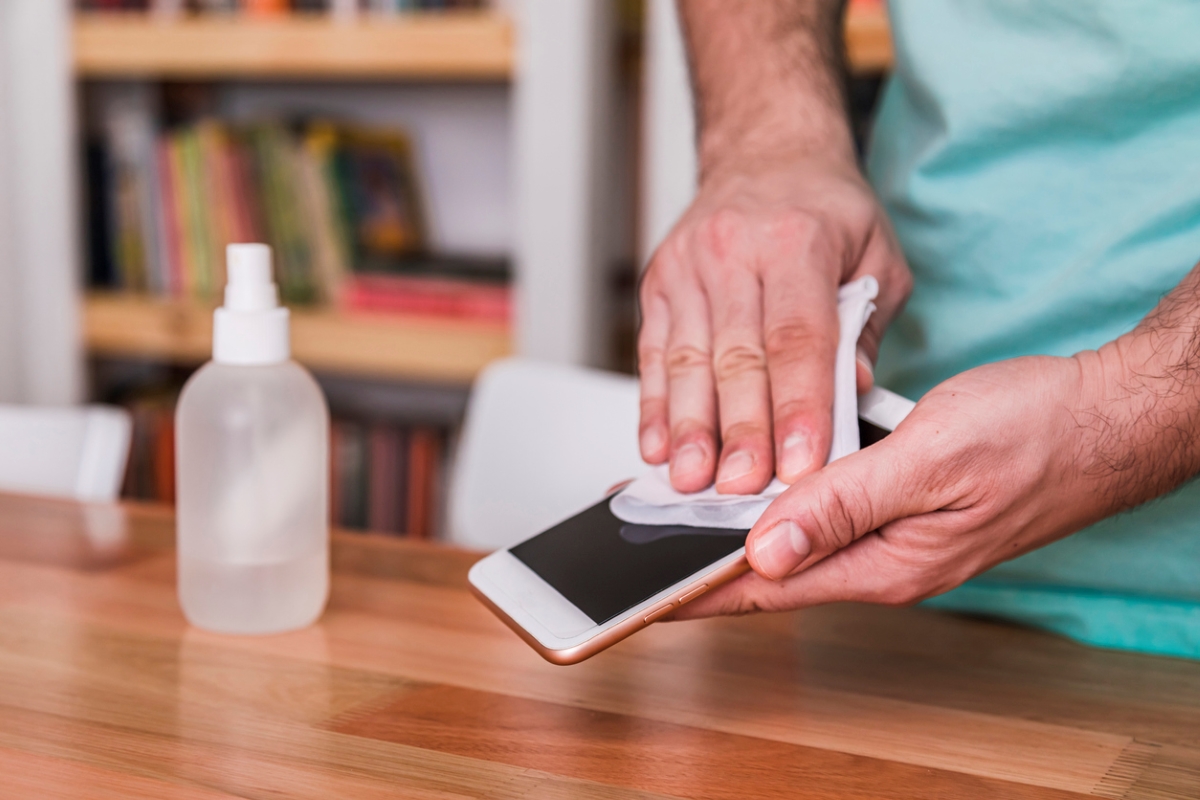
Devices with touch screens are modern miracles, but they are also germ magnets. Make sure to wipe down smartphones, tablets, computer keyboards, and any other electronic devices after an illness has passed through your home with disinfecting wipes made especially for screens and electronics, such as Weiman disinfectant electronic wipes. Alternatively, you can use a microfiber cloth dampened with a mixture of 70 percent isopropyl alcohol and 30 percent water to gently wipe the product. Note: Ensure that you turn off and unplug devices before cleaning them to avoid damaging them.
RELATED: 11 Ultra Powerful Products That Cut Your Cleaning Time in Half
10. Toys
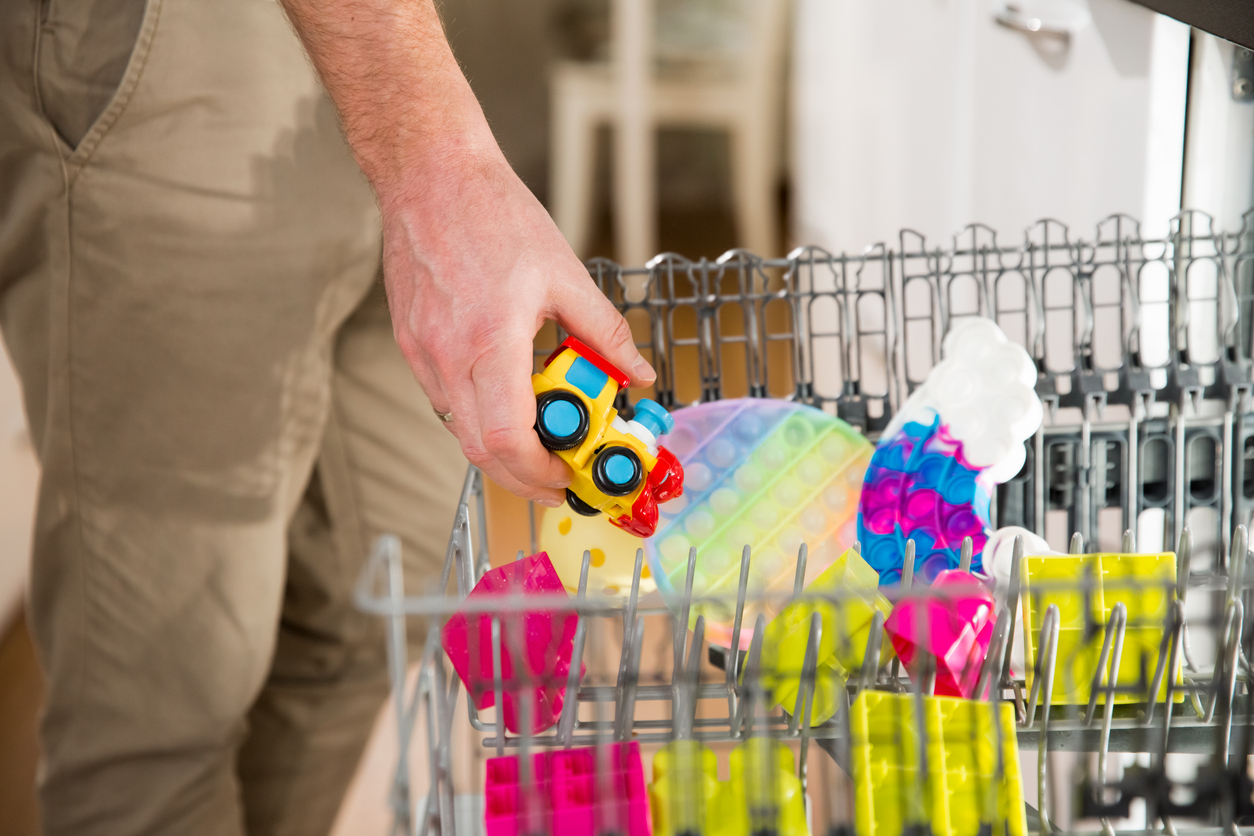
If you have kids, thoroughly sanitize any hard or plastic toys to stop the spread of germs. Use soap and water to wash plastic toys. One of our favorite timesavers is to put small, plastic playthings like LEGO bricks in a mesh bag, and run them through the dishwasher in the top rack. They’re clean, and you haven’t spent all day wiping them individually.
RELATED: 20 Crazy Cleaning Tips That Actually Work
11. Stuffed Animals
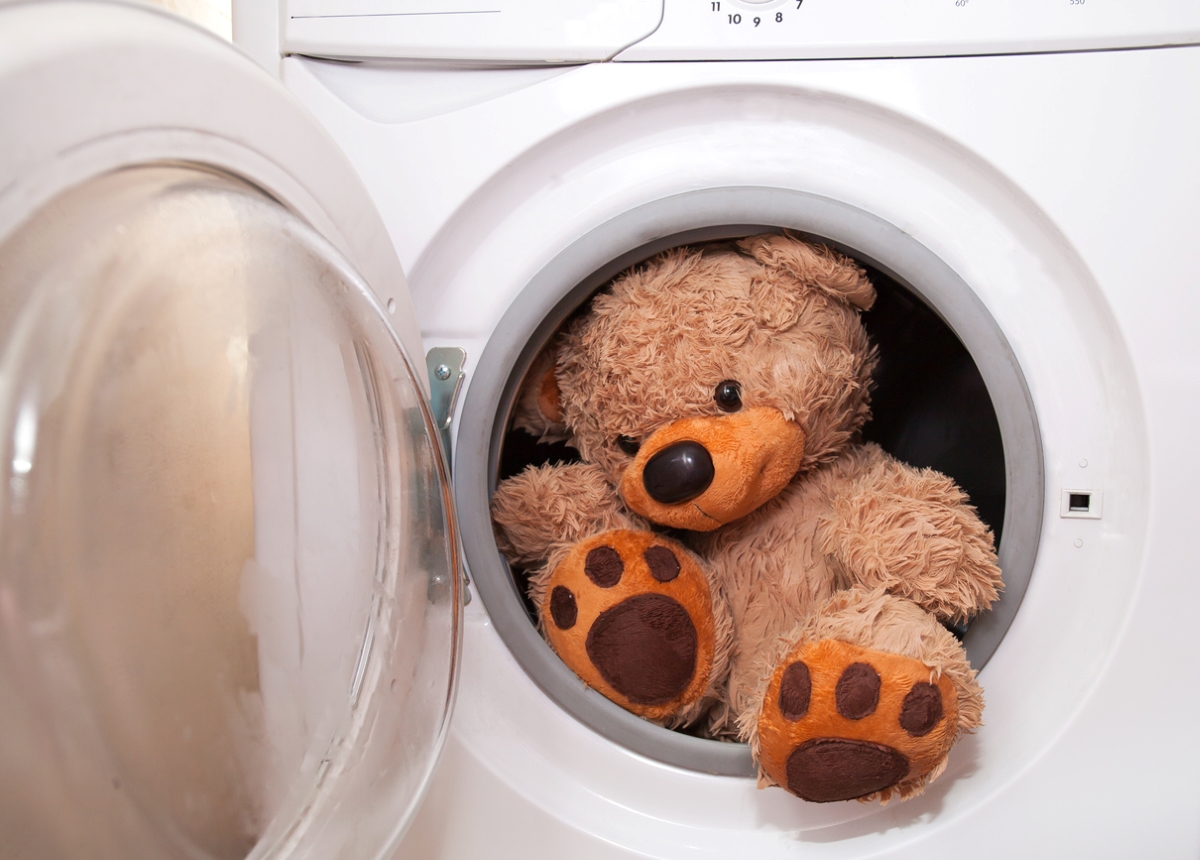
Soft toys like stuffed animals can’t be cleaned with disinfectant wipes. You can, however, toss any machine-washable plush toys into the laundry along with the bedding or clothing. Some stuffed animals are too delicate for the machine, so just run them through the dryer on a high heat setting to kill germs they might be harboring.
RELATED: The Best Natural Cleaning Products, Tested and Reviewed
12. Toothbrushes
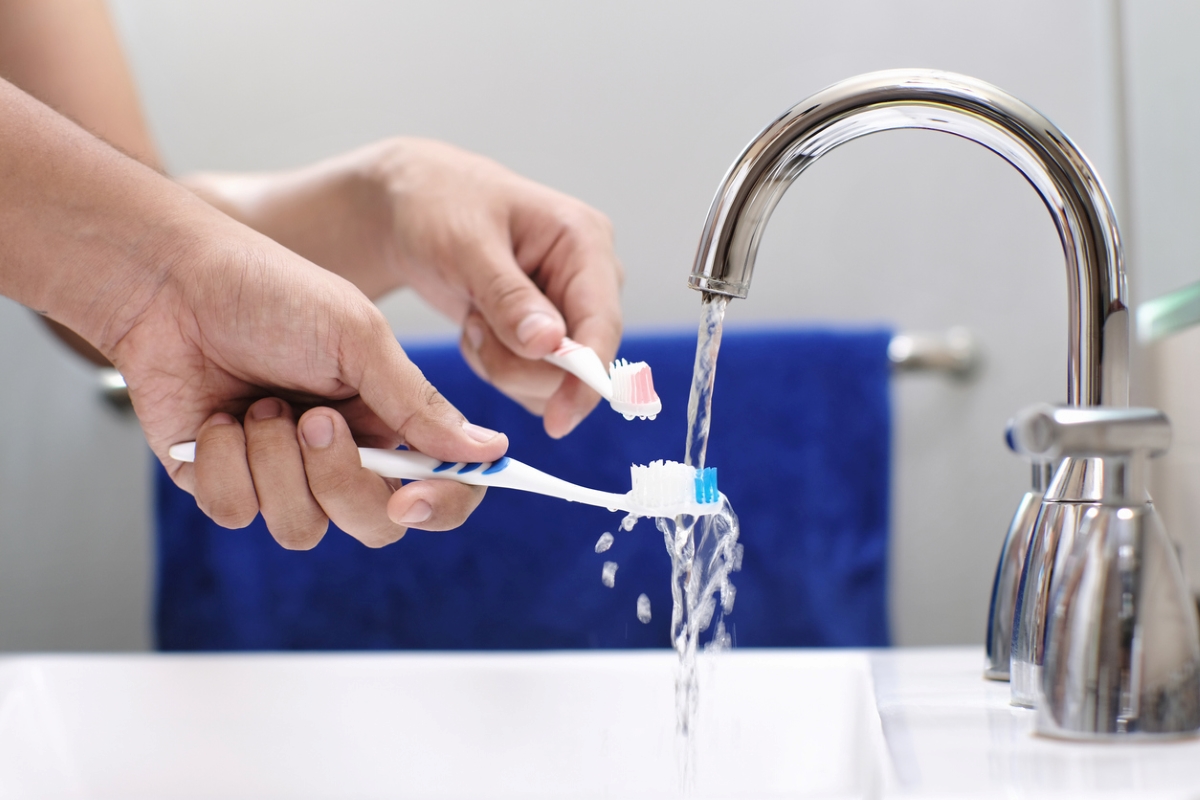
It’s good practice to replace your toothbrush (or your electric toothbrush’s head) every time you’re sick. If you prefer not to toss your brush, soak it in a mixture of water and hydrogen peroxide for an hour, and then rinse them thoroughly with water. One study found that 3-percent hydrogen peroxide was the most effective and economic disinfectant for toothbrushes compared with other solutions. You can also run toothbrushes through the dishwasher, or zap them with a portable UV toothbrush sanitizer. Don’t forget to clean your toothbrush holder too!
RELATED: 14 Surprising Places Where Mold Hides in the Home
13. Garbage Cans
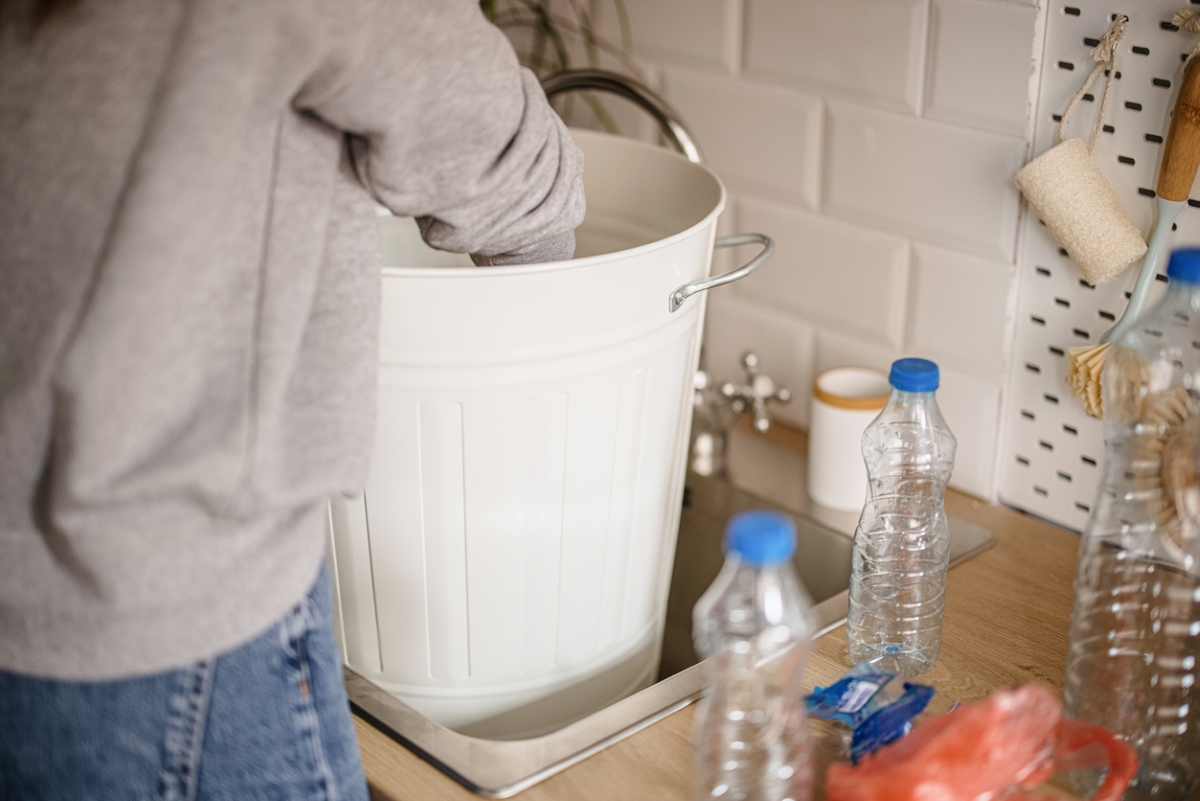
When your family is plagued with stomach flu, garbage cans around your place can look (and smell) pretty unpleasant. Trash cans also are home to millions of microscopic germs, viruses, bacteria, and more that can be harmful to your health. To clean a garbage can, empty it and spray it down with a garden hose. This will loosen grime and help get rid of nasty odors. Use dish soap, water, and a sponge or brush to scrub the inside of the can. Rinse the can and let it air dry completely before spraying it with Seventh Generation disinfectant or a similar product. Wipe dry and let air dry.
RELATED: 3 Fixes for a Foul-Smelling Trash Can
14. Indoor Air
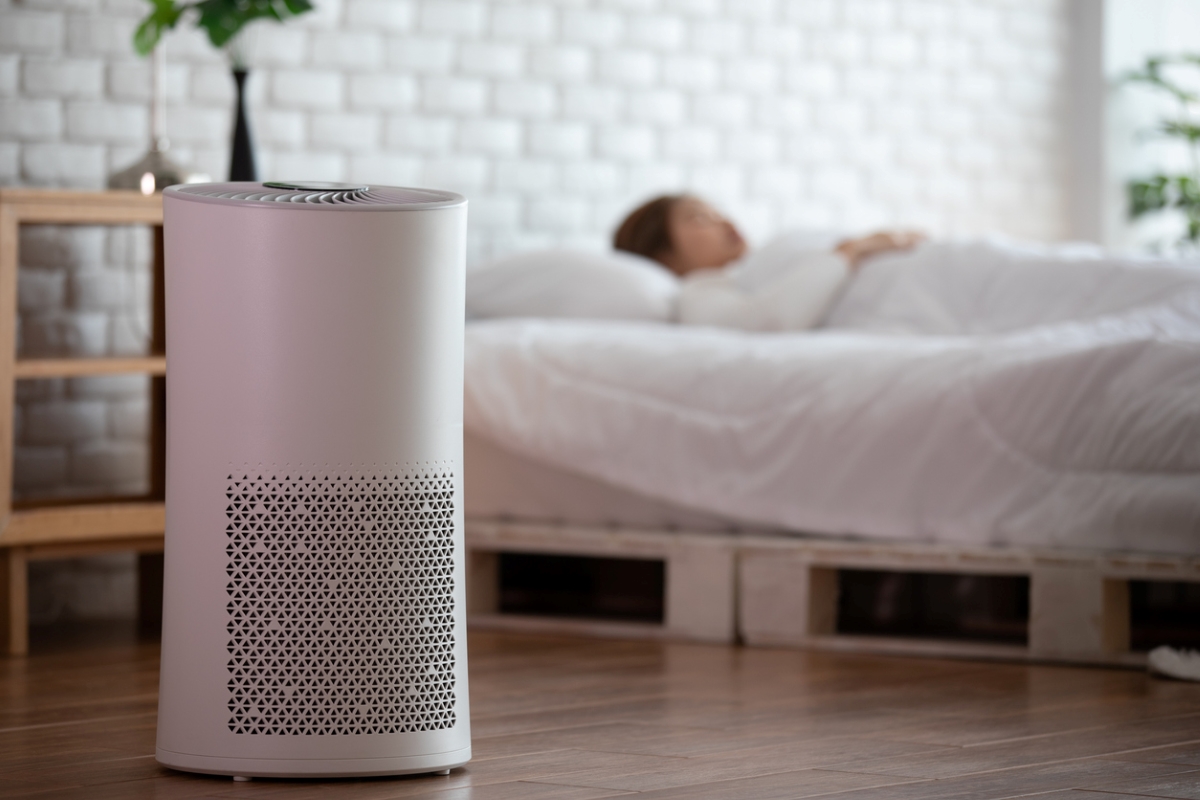
Cleaning the air in your home after you or your loved one has been sick is essential to eliminating lingering germs and improving air quality. Research shows that factors like temperature, sunshine, humidity, and wind can influence the transmission of airborne diseases. To help eliminate airborne pathogens in your home, use a high-quality HEPA air purifier to help capture small particles. It’s a good idea, too, to ventilate your home by opening windows to exchange indoor and outdoor air.
RELATED: The 10 Best Air Purifiers for Fresh Air, Tested
15. Keys, Glasses and Pens
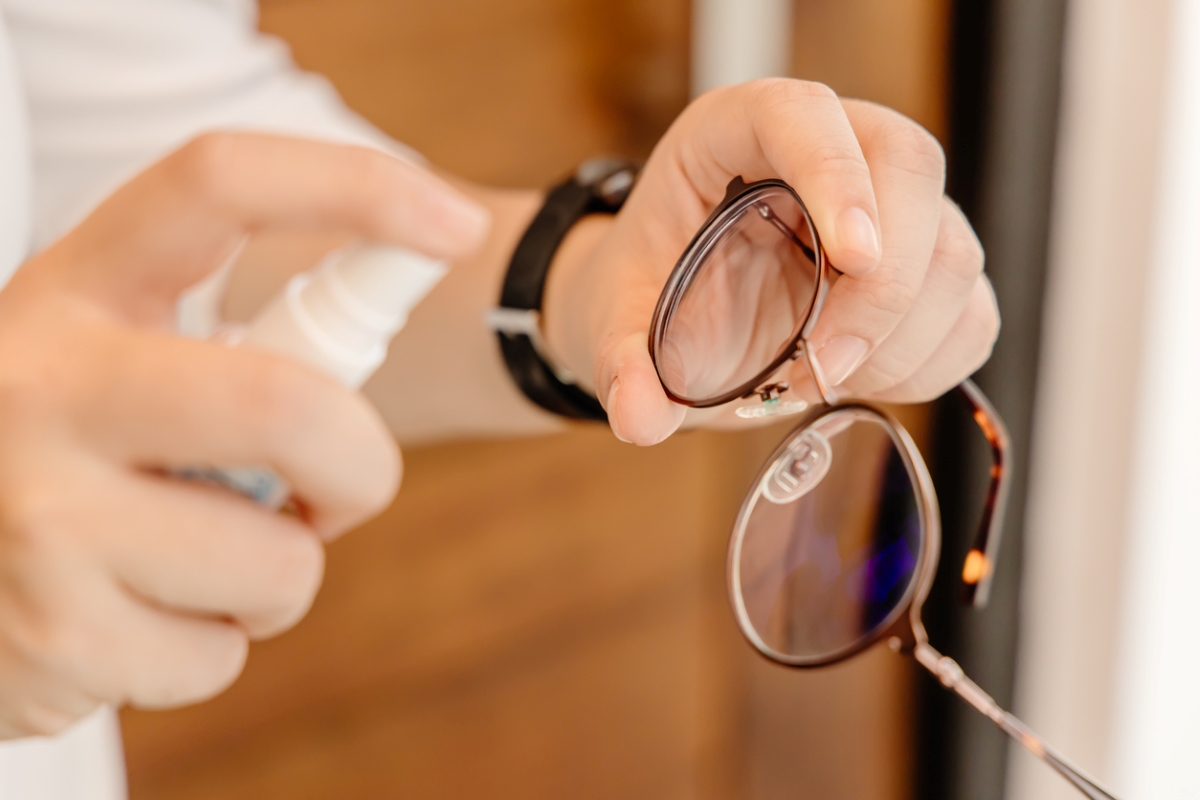
Frequently touched items like keys, glasses, and writing tools can harbor lingering pathogens that can pose significant risks to your health and others. To clean them effectively, use disinfectant wipes or spray (like Microban’s 24-hour Disinfecting Spray) or, if feasible, a soap and water wash. Allow the items to air dry before using them again. UV light sanitizers, like Philips’ light sanitizer box, can disinfect small items without moistening them with a solution.
16. Your Vehicle
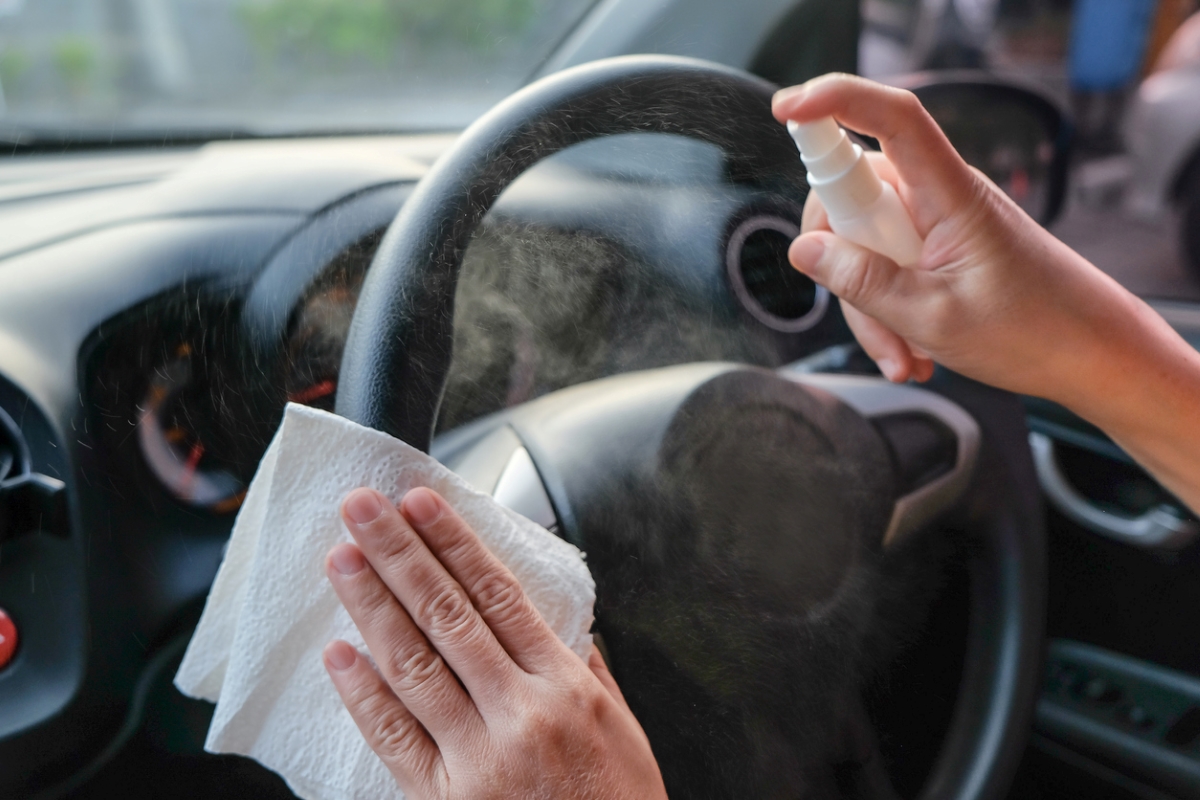
While your vehicle technically isn’t inside the home, it is one of the most common places where germs will stick around after being sick—think about how many times have you been to the doctor or pharmacy since you fell ill. Isopropyl alcohol is effective for cleaning the inside of your car, as is a simple soap and water mixture. Products like ArmorAll disinfectant wipes, which are made specifically to clean your car’s hard surfaces, and Lysol fabric disinfectant, which can freshen up your upholstery, are convenient and also work well.
Avoid using bleach or hydrogen peroxide on the car’s interior, however, as these can damage upholstery and trim. Ammonia-based cleaners can also damage touch screens, so avoid using those too.
